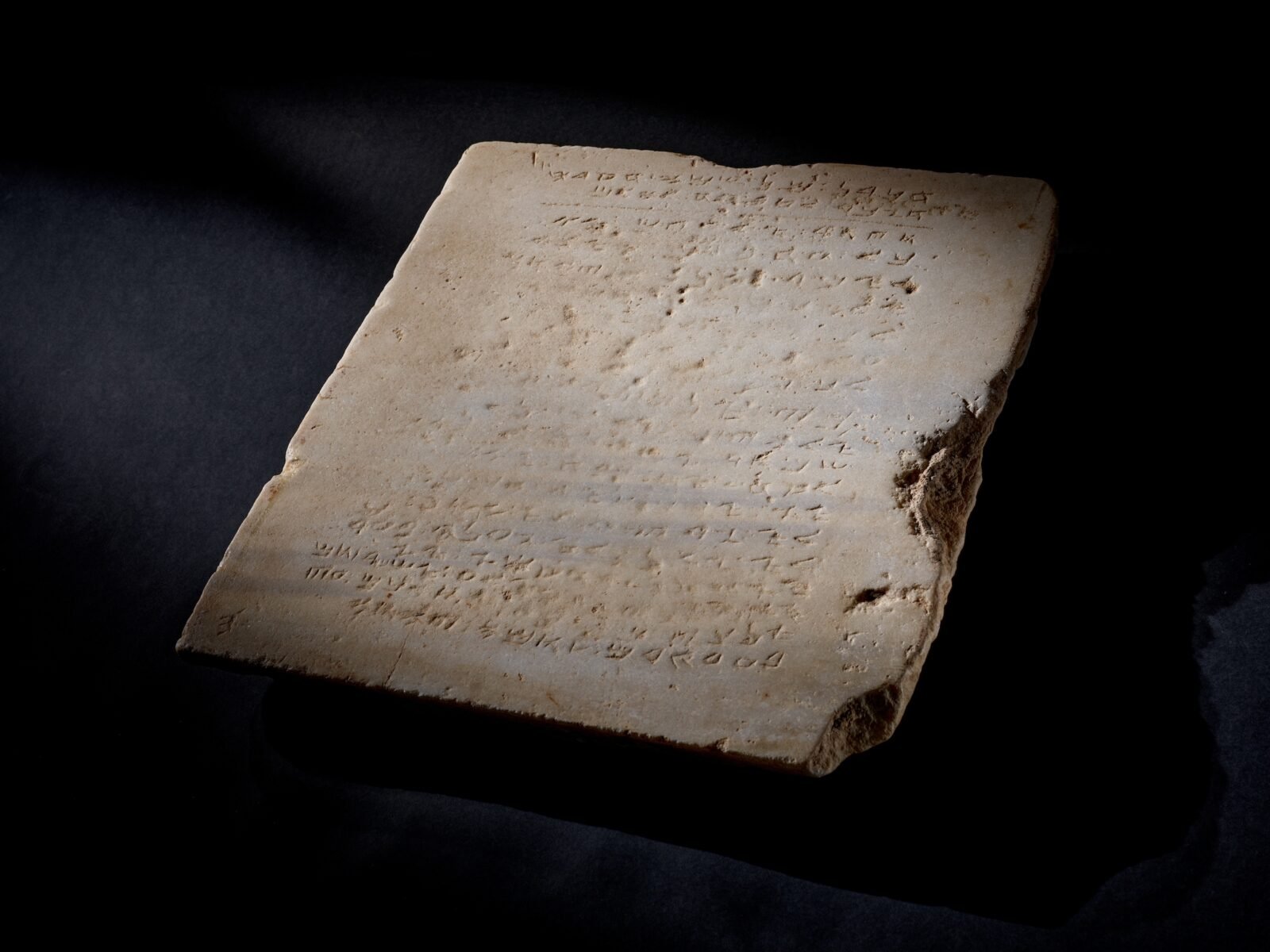A marble tablet containing nine of the Ten Commandments, said to be the oldest intact version of its kind in stone, will go under the hammer next month. sales per lot at Sotheby’s in New York. The artifact, which measures approximately 2 feet (61 cm) and weighs 115 pounds (~52 kg), is hitting the market for the first time since 2016 with an estimated retail price of $2 million.
According to the auction house, the commandments were written on the tablet in Paleo-Hebrew script in the late Roman-Byzantine era (c. 300–800 AD). The slab was unearthed in 1913 during railway excavations near what was once known as Iamnia during the Roman-Byzantine period (the modern city of Yavneh in Israel and Jabneh for the Palestinians, who were expelled after the Nakba of 1948). The object was used as a paving stone on the threshold of a local home for 30 years before its significance was recognised, Sotheby’s said.

There are twenty lines of text inscribed on the tablet, but only nine of the Ten Commandments appear, as found in the Book of Exodus, with the omission of ‘Thou shalt not take the name of the Lord in vain.’ The tablet’s original location was most likely destroyed between 400 and 600 CE during the Roman invasions, or by the Crusaders in the 11th century. The tablet also contains additional guidance for worshiping at the holy site of Mount Gerizim, sacred to the Samaritans.
According to a Sotheby’s provenance record, a scholar and archaeologist named Y. Kaplan purchased the tablet in 1943 and three years later published the first academic article on the artifact to alert the world to its existence and importance as a Samaritan decalogue. Antiques dealer Robert Deutsch acquired the tablet in the 1990s, soon followed by Rabbi Saul Deutsch (no relation) in 2005 for the Living Torah Museum in New York. It was last sold to Mitchell Stuart Cappell in 2016 for $850,000 in a sale organized by Heritage Auctions, with one condition: it must be made available for public display.
Now Cappell may part with the tablet when it is sold at auction on December 18. The piece will be included in a pre-sale exhibition at Sotheby’s in New York from December 5.
“To encounter this shared piece of cultural heritage, you must travel through millennia and connect with cultures and beliefs told through one of humanity’s earliest and most enduring moral codes,” said Richard Austin, Sotheby’s Global Head of Books and Manuscripts, in a statement.













Leave a Reply